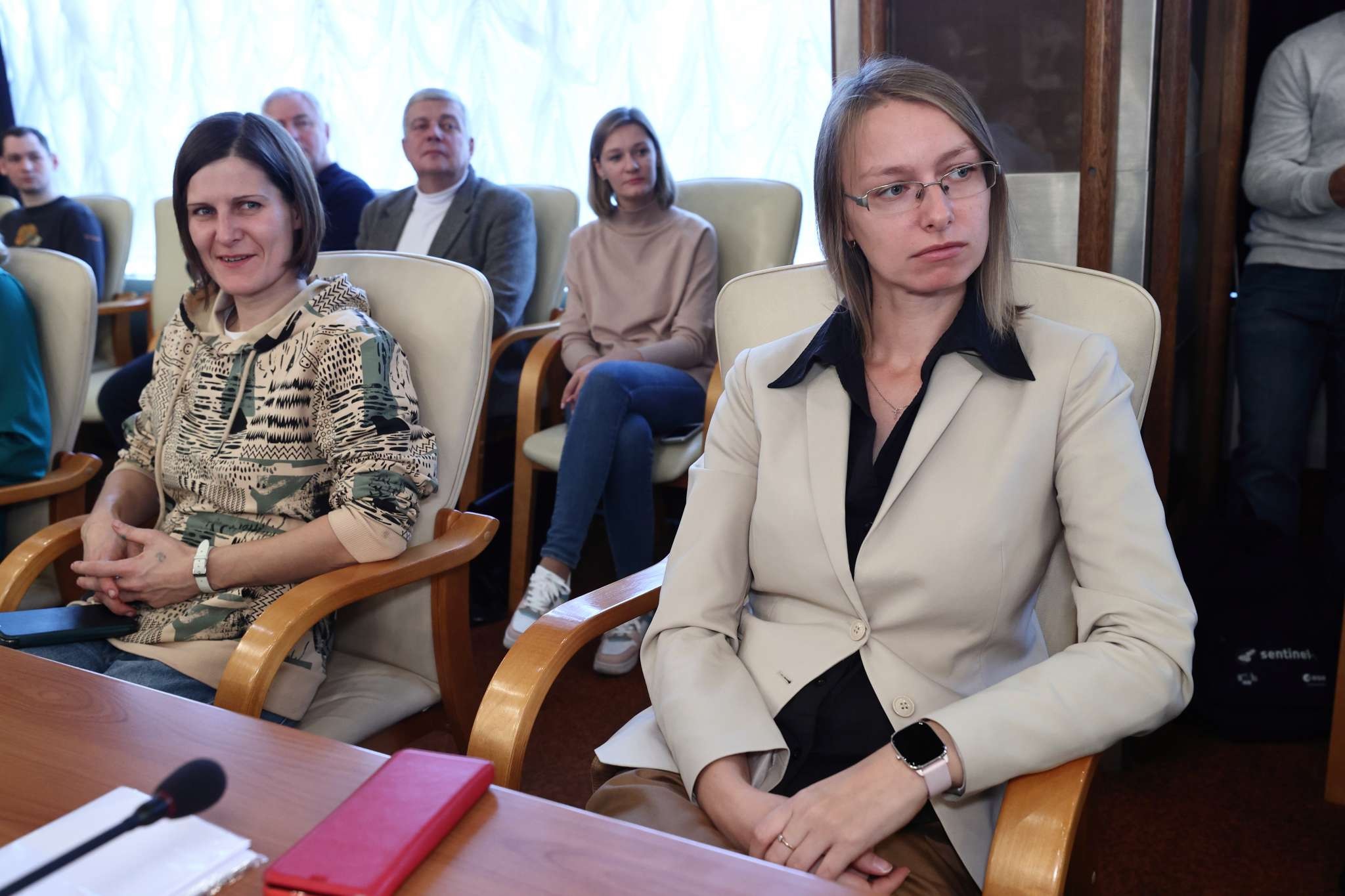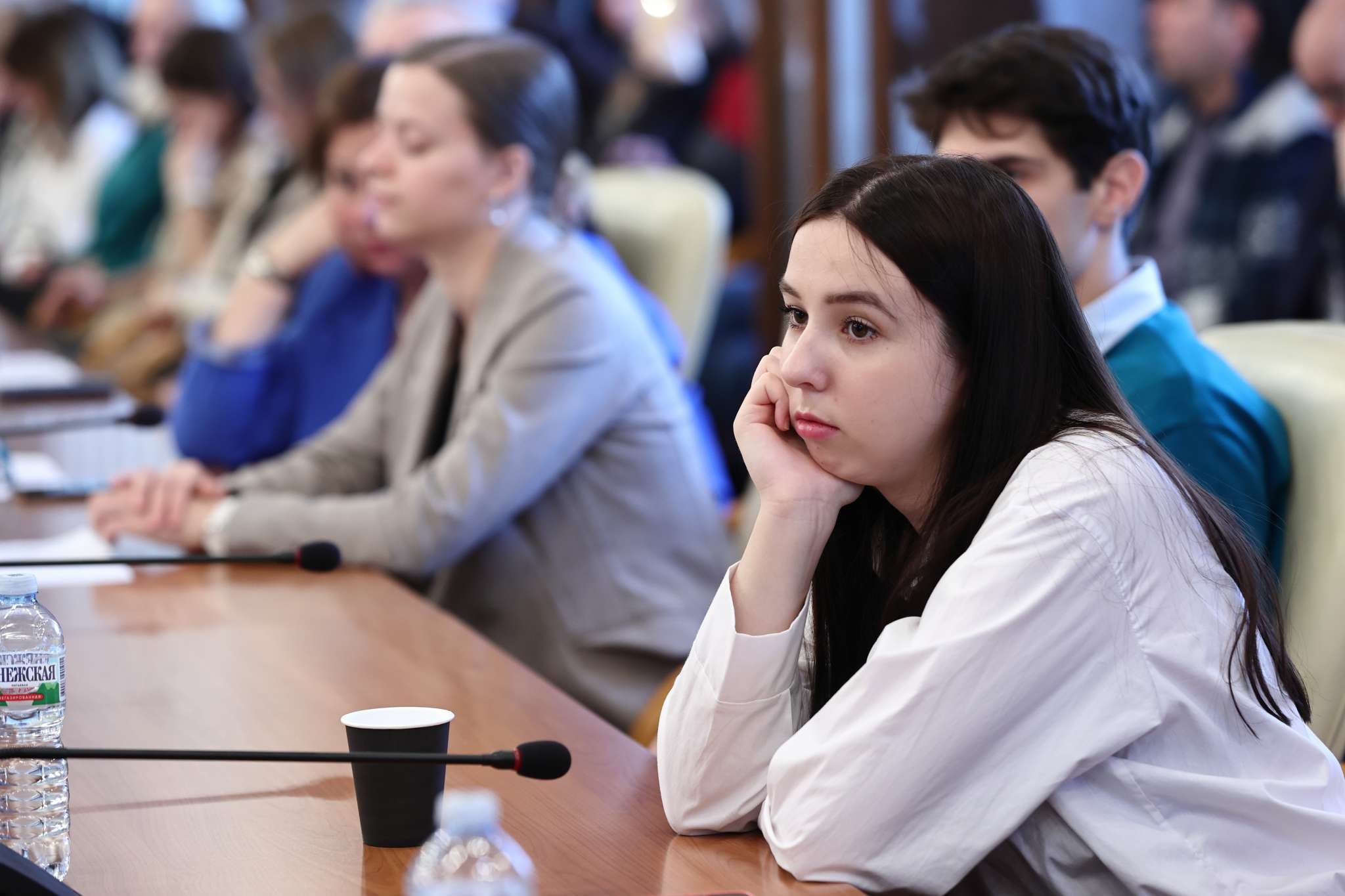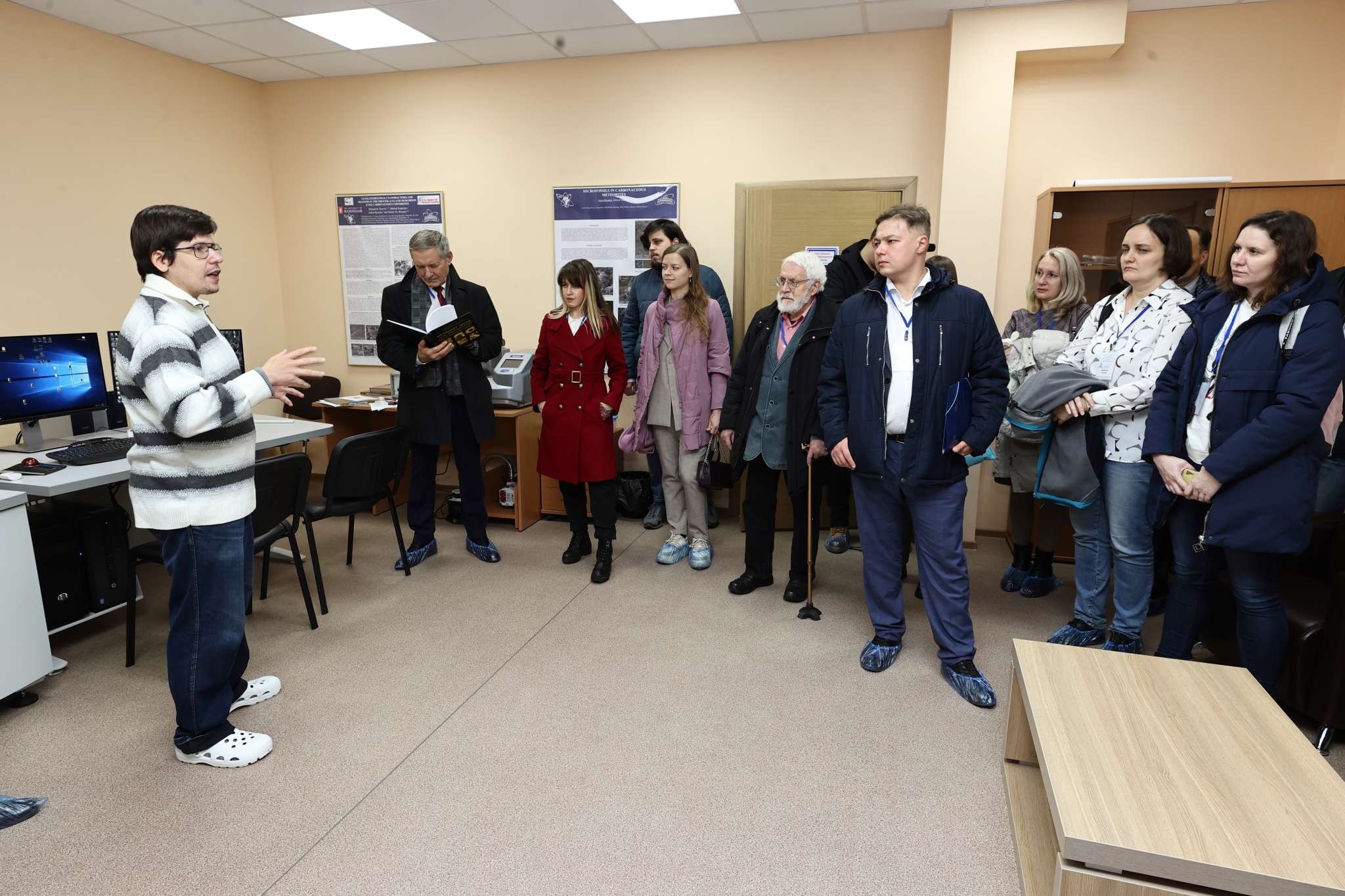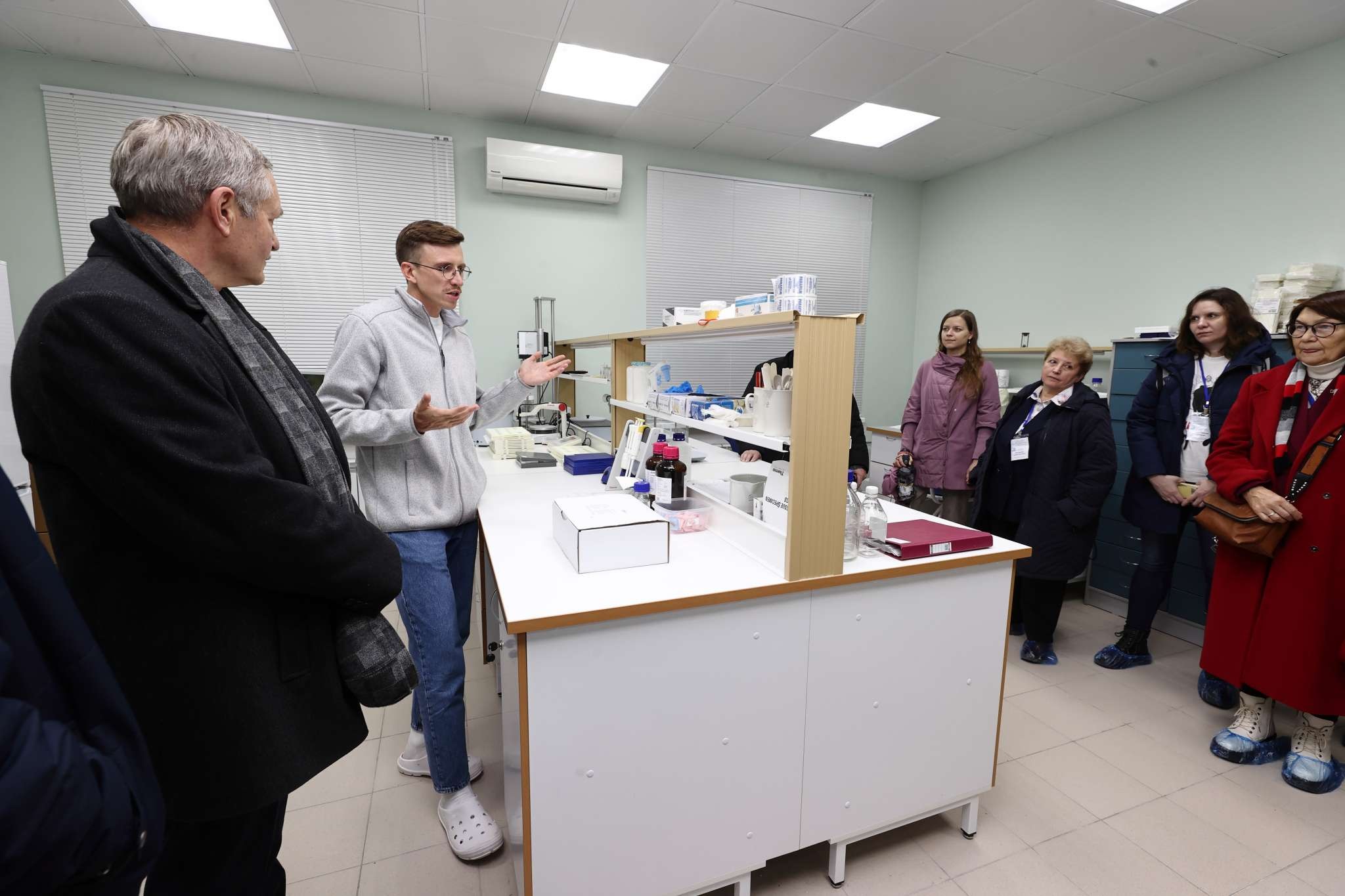Geneticists and physicists discussing mechanisms underlying life in Dubna
News, 20 October 2023
On 19 October, a conference entitled “Current issues and molecular genetic research in radiobiology. On the 70th anniversary of DNA structure discovery” started at the JINR International Conference Centre. The event focuses on experimental data on the mechanisms of genetic and epigenetic changes appearing in cellular structures under ionising radiation exposure and the consequences of these changes. Among participants are leading specialists in radiobiology and medical physics from Armenia, Azerbaijan, Belarus, Russia, and Uzbekistan, as well as research centres of the Federal Medical Biological Agency of Russia (FMBA) and Russian universities. The organizers are the Scientific Council on Radiobiology of the Department of Physiological Sciences of the Russian Academy of Sciences (RAS), the RAS Radiobiological Society, and the Laboratory of Radiation Biology at JINR.
JINR Director, RAS Academician Grigory Trubnikov gave an opening speech: “Time is one’s most significant resource, and therefore it is especially valuable for us to see you here today. This conference is dedicated to the 70th anniversary of the DNA structure discovery. This topic is associated with the names of many scientists, and not only those who received the Nobel Prize, but also Timofeev-Ressovsky, Gazenko, Bach, Sisakian, and other researchers who contributed to discoveries in genetics. I congratulate you on this anniversary. It serves as a great occasion to discuss the most urgent problems not only in radiation biology, but also in molecular biology, medical physics, and genetics, the areas which you specialise and excel in.”
In his talk, JINR Scientific Leader, RAS Academician Victor Matveev emphasised the discussion of research at the intersection of different sciences as a special feature of the conference. “Discussions between physicists and biologists foster progress in studying the most fundamental laws of our world,” he noted. JINR Vice-Director Latchesar Kostov welcomed the participants as well, wishing them successful fruitful work.
“The conference is of great interest for all radiobiologists. The Radiobiological Society of the Russian Academy of Sciences comprises approximately a thousand researchers specialising in about 20 different areas of this science, all incorporating molecular genetic research methods in their studies,” noted Co-chair of the conference, President of the RAS Radiobiological Society, Chief Researcher at the FMBA Burnasyan Federal Medical Biophysical Centre (Burnasyan FMBC), RAS Academician Igor Ushakov.
Chair of the RAS Scientific Council on Astrobiology, Head of Laboratories at the RAS Borissiak Paleontological Institute, Head of the LRB JINR Astrobiology Sector Alexey Rozanov pointed out that today, it is especially important to understand what fundamental science is and preserve it, a task that Dubna researchers constantly pay special attention to.
Co-chair of the conference, Chair of the RAS Scientific Council on Radiobiology, LRB JINR Scientific Leader, RAS Corresponding Member Evgeny Krasavin highlighted the significance of the conference’s title. April 2023 marked the 70th anniversary of Francis Crick and James Watson’s paper titled “Molecular structure of nucleic acids: a structure for deoxyribose nucleic acid” being published in the Nature scientific journal. The researchers were the first to propose a double helix as a model of the DNA spatial structure. “The DNA structure reflects all the complex mechanisms underlying life. Biology, a science that focuses on heredity and variability, was transformed by this discovery,” Evgeny Krasavin emphasised. He noted that JINR started researching genetics in the 1970s and has been actively working in this field ever since. Thus, JINR has a number of accelerators that are successfully used for the tasks of not only physics, but also biology, including the FLNR Multi-Charged Ion Accelerators and the NICA Accelerator Complex, which provides the possibility to irradiate biological objects with heavy ions as part of the ARIADNA Applied Research Project.
Evgeny Krasavin and Igor Ushakov presented a brief overview of research done by a galaxy of outstanding Soviet and post-Soviet radiobiologists. They noted the scientific discoveries of Professor George Gamow, who carried out fundamental work on the genetic code structure, and the first studies of repair processes carried out by Vsevolod Paribok, Vladimir Zhestyanikov, Nikolay Tomilin, and Semyon Bressler.
Before the start of the plenary session, the audience paid tribute to the memory of their senior colleague, an outstanding specialist in radiation hygiene, Honorary President of the Burnazyan FMBC, RAS Academician Leonid Ilyin.
Plenary speakers presented reports on the most fundamental problems of the origin of living matter. A senior researcher at the Bekhterev National Medical Research Centre for Psychiatry and Neurology, Candidate of Biology Nikita Khromov-Borisov discussed the history of the development of ideas about the molecular nature of DNA and the gene and chromosome reproduction. Director of the Institute of Physical and Chemical Bases of Functioning of Neuronal Networks and Artificial Intelligence of Moscow State University, Scientific Leader of the RAS Emanuel Institute of Biochemical Physics, RAS Corresponding Member Sergey Varfolomeev reported on the thermal cycle, the driving force of prebiological synthesis and selection of biopolymers as the basis for the origin of life. When commenting on the conference, Sergey Varfolomeev emphasised the high demand for radiation biology: “The reason for this is not only that we are constantly exposed to natural radiation, such as the one from space. It is also necessary to understand radiation fields well because they are the essence of a large number of technological processes in medicine, ecology, and nuclear energy.”
As LRB JINR Director Aleksander Bugay noted, the reports of the conference participants reflect various aspects of the issues of DNA structure, primarily radiation mutagenesis. The event covers a wide range of topic: scientists are discussing the structure of molecular DNA damage, details of DNA strand repair, induced gene and structural mutations, and the long-term consequences of radiation exposure.
“Many leading LRB researchers presented their works at the conference. A large part of the stidues deals with different types of DNA damage and radiation-induced mutagenesis, cytogenetic effects of ionising radiation, and the modelling of all these processes. A number of reports is concerned with the effectiveness of radioprotectors and fundamental research in quantum information,” Aleksander Bugay said.
The conference will finish on 20 October.



















